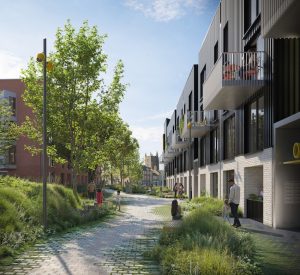Many Midlands housing schemes facing the axe after new court ruling

DOZENS of planned housing developments in the Midlands may now be axed or reviewed following a landmark judgment which quashed a major plank of the Government’s policy on affordable housing.
The ruling by a High Court judge will have far-reaching implications for many councils, according to planning solicitor-advocate Niall Blackie.
Blackie, senior partner with law firm FBC Manby Bowdler and member of the Law Society’s Specialist Planning Panel, said the Judicial Review focused on a challenge to the government policy of excluding developments of 10 houses or less from affordable housing requirements.
West Berkshire and Reading councils claimed the affordable housing policy went against planning law which gives local authorities the power to approve applications in line with their own regional development frameworks, ahead of national policy.
“This judgment will have huge ramifications on small scale developments in the Midlands and across the UK which may currently be in the planning system, pending appeal or have had planning approved in principle but not yet been given permission,” said Blackie.
“Cases where a council has resolved to grant permission, but has not yet issued it, are all very likely now to be taken back to committee or reviewed by officers, in light of the ‘material change in circumstances’ created by the new case.
“The judge found that the affordable housing policy cut against the whole local plan system, and identified a number of reasons why the 10 house exemption would have ‘profound consequences’ for the local planning system.”
The ruling specifically referenced Shropshire County Council’s response to consultation on the affordable housing policy before it was introduced which said that 80% of the annual housing delivery in the county took place on sites of five or less, so the number of affordable homes being built in the region would have been lower under the government’s affordable housing policy.
During the case, the Secretary of State had tried to argue that the affordable housing policy was only ‘policy’, not law, and therefore the decision maker was able to override the policy in appropriate areas, but the judge rejected this, added Blackie.
“In Shropshire we have seen the effect of the confusion over the status of the affordable housing policy in a series of council decisions and inconsistent appeal decisions. It was important that the Court gave a clear ruling, as it certainly has,” he said.
“The impact of the ruling is that local planning frameworks, which in some rural areas tend to have a high proportion of small sites, and have an affordable housing quota, (either by providing on-site housing or by financial contribution or both) for those sites, will now be followed again, after a period in which such sites could be brought forward without that quota.
“Shropshire is one of the local authorities which has been opposed to this part of the government’s affordable housing policy. Its robust position has been to continue making decisions based on the development plan and the emerging SAMDev, overriding the policy which the Court has now quashed. Whilst that position has been taken, the council has faced challenges to its argument, and has faced many appeals. The decision, frankly, vindicates the Shropshire stance.”
The SAMDev is the Shropshire Council Site Allocations and Management of Development (SAMDev) Plan which sets out how the county should develop over the decade, from 2006 to 2016, setting out which land should be zoned for various uses.
“Every case will be different, and advisors will have to think carefully as to the consequences of the removal of the affordable housing policy. But, clearly, the Shropshire Council position has been vindicated.”









